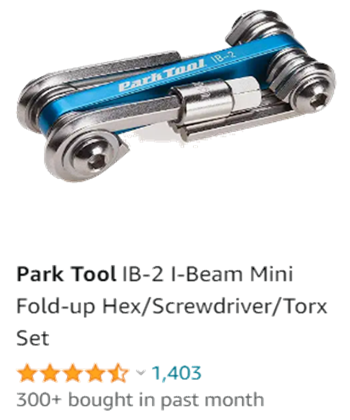1988 Panasonic Bicycle DX-5000

The 1988 Panasonic bike DX-5000 is this week’s “Bicycle of the Week,” and it’s truly a dream for Panasonic bike collectors. Built for speed, style, and durability, this bike stands as a shining example of late 80s racing craftsmanship. While the DX5000 wasn’t the highest-spec model of its time, it still holds a special place in the hearts of enthusiasts of vintage Panasonic bicycles.

From its sleek, high-end Tange Prestige chromoly steel frame to its Shimano 600 components, this Panasonic racing bike continues to turn heads. In fact, if you’re a fan of rare bicycles, you certainly won’t want to miss this deep dive into the timeless DX5000, which stands out as a notable example in the world of classic road bikes.
frame to its Shimano 600 components, this Panasonic racing bike continues to turn heads. In fact, if you’re a fan of rare bicycles, you certainly won’t want to miss this deep dive into the timeless DX5000, which stands out as a notable example in the world of classic road bikes.

The History of the Panasonic Bicycle DX5000: A Mid-80s Icon
When looking at the history of Panasonic bicycles, it’s clear that they have a rich heritage in the world of Japanese road bikes.
Are your tires safe to ride on? Check some of these
The company began producing bicycles in the early 1950s, and they quickly earned a reputation for quality and innovation. By the 1970s, Panasonic had become a major player in the global bike market, especially with their high-performance road bikes.

The Panasonic DX-5000, introduced in the mid-1980s, is a key part of this legacy. Its production peaked between 1987 and 1989. Built with Tange Prestige tubing and Shimano 600 components, this bike was designed for competitive riders.
Though it wasn’t the most elite model in Panasonic’s lineup, the DX5000 was still highly respected for its performance and craftsmanship. Moreover, Panasonic’s attention to detail ensured this model remained popular in the vintage bike market.

Key Features of the 1988 Panasonic DX-5000
One of the most striking features of the 1988 Panasonic bicycle DX-5000 is its chromoly steel frame.
Built with Tange Prestige Cr-Mo double-butted tubing, the frame was renowned for both its strength and lightweight road bike design. The Cr-Mo material, for instance, made the bike highly durable while keeping the weight low, giving riders a clear competitive edge.

Additionally, the combination of strength and lightness made the DX-5000 ideal for both racing and long-distance riding.
Replenish your electrolytes while riding! Great buys!
Not only that, but the frame also included forged ends and a sealed bottom bracket, which ensured both longevity and smooth performance. For its time, this Panasonic bicycle was considered one of the best-engineered frames on the market, making it a favorite among cycling collectors.

Furthermore, another key feature of the DX-5000 was its Shimano 600 Ultegra group set. These components, known for their precision engineering, ensured quick and accurate shifting.
As a result, the bike delivered a remarkably smooth and efficient ride. Whether riders were climbing steep hills or sprinting, the Shimano components consistently performed reliably. The Ultegra group set also enhanced the bike’s durability, further solidifying the DX-5000’s reputation as a high-end vintage bike.

Taken together, the Tange Prestige frame and Shimano components created a bike that was fast, reliable, and perfect for serious cyclists.
Consequently, these features helped make the 1988 Panasonic DX-5000 a favorite among both racers and vintage bicycle collectors. Even today, these features are what make it highly sought after for vintage bicycle restoration and among those in the classic bike community.

The Ride Experience: Why Riders Loved It
One of the more unique aspects of the 1988 Panasonic bicycle DX-5000 was its use of Shimano’s Biopace chainrings. Unlike traditional round chainrings, the Biopace chainrings were oval in shape. The idea behind this design was to smooth out the pedaling motion, making it a standout feature in many retro road bike models.
Is your chain properly lubricated? Some here on sale!
With traditional round chainrings, a “dead spot” is created when the pedals are at the top and bottom of the stroke. This is where riders often lose momentum. Shimano believed the oval shape would help reduce this dead spot. Theoretically, this would improve efficiency by distributing the rider’s power more evenly throughout the pedal stroke.

For many riders, the Biopace chainrings made a noticeable difference. Particularly on flat terrain, they felt smoother when pedaling at a steady cadence. However, not every rider loved the system.
Some found it awkward, especially during high-intensity efforts like sprints. Today, the Biopace system is considered a fascinating relic from an era of bold innovations in cycling memorabilia.

Precision Steering and Control on the Panasonic Bicycle
The 1988 Panasonic bicycle DX-5000 was designed with precision steering and reliable control, making it a favorite among serious cyclists. In addition, with its top-tier components, the bike provided smooth handling and excellent comfort on every ride.
The Ultegra sealed headset, coupled with high-quality handlebars and a stem, offered an exceptional riding experience.

Each component worked together seamlessly, giving riders the confidence they needed in their performance and control. This superior handling and control also made the bike a sought-after model in vintage bike auctions.
- Ultegra sealed headset: Ensures smooth and long-lasting steering for better handling.
- Handlebar (SR CTB, Maes Alloy): Lightweight, ergonomic, and built for control during long rides.
- Stem (SR CT Alloy): Strong, durable, and easily adjustable for custom comfort.
Power and Efficiency on the Panasonic Bicycle Drive Train
The 1988 Panasonic bicycle DX-5000 was equipped with top-tier drivetrain components designed for optimal power transfer and smooth shifting. Specifically, the Shimano 600 Ultegra crankset, freewheel, and chain were engineered to provide reliable performance and efficiency, something highly valued by bike enthusiasts and those involved in bike restoration projects.

Each of these drivetrain components worked in harmony, making the DX-5000 a standout choice for both racers and long-distance cyclists. Its focus on bike frame geometry and classic bicycle features further contributed to its legendary status.
- Crankset (Shimano 600 Ultegra Biopace 53/42T): Oval design for smoother power distribution.
- Freewheel (Shimano 600 Ultegra 7-speed 12-21T): Provides versatile gearing options for various terrains.
- Chain (Shimano 600UG silver): Lightweight and designed for smooth, precise shifting.
Smooth Shifting and Reliable Stopping Power
The 1988 Panasonic bicycle DX-5000 featured a Shimano 600 Ultegra transmission system, which ensured precise and effortless gear changes. Both the front and rear derailleurs worked seamlessly with the down tube-mounted shifters, providing riders with quick and accurate shifts, even in challenging conditions.

- Rear Derailleur (Shimano 600 Ultegra S.I.S.): Delivers fast and precise gear changes.
- Front Derailleur (Shimano 600 Ultegra): Ensures smooth transitions between chainrings for efficient power.
- Shifting Lever (Shimano 600 Ultegra 7-speed S.I.S. & Light Action): Mounted on the down tube for quick, responsive shifts.

In addition to its smooth shifting, the bike was also equipped with Shimano 600 Ultegra brakes, offering reliable and precise stopping power. This made the DX-5000 a well-rounded performer, ensuring safety and control at high speeds or on steep descents, which was crucial for competitive cyclists.

- Brakes (Shimano 600 Ultegra, alloy side pull): Provides strong and consistent braking power for better control.
- Ultegra S.L.R. aero levers: Designed for smooth and efficient brake control with minimal effort.

Conclusion
In conclusion, the 1988 Panasonic bicycle DX-5000 remains a true icon in the cycling world. Its innovative design, combined with Japanese craftsmanship, made it a favorite among both racers and cycling enthusiasts. Even today, it continues to capture the attention of collectors and those who appreciate retro bike design.

With its precision engineering and thoughtfully chosen features, the Panasonic bicycle offered not only speed and comfort but also longevity. Built for performance and to stand the test of time, the DX-5000 remains highly sought after by those looking for a collectible bicycle or a project in vintage bicycle restoration.
Ultimately, the 1988 Panasonic bicycle DX-5000 represents a golden era of 1980s road bikes, striking the perfect balance between innovation and tradition. Whether you’re a cycling collector or a rider, this bike will always stand out in the world of high-end vintage bikes.
If you enjoyed learning about this week’s featured bicycle, don’t miss out on some cycling information you can use and enjoy! Visit our website at pacelinebikes.comPlus, check out our YouTube channel, Bicycle Restoration Man, for detailed restoration videos and showcases of our finished projects. Subscribe and join our community of bike enthusiasts!
We earn from qualified Amazon purchases with NO cost to you. ANY item that you need or were going to purchased anyway through any of our links, helps support this site. Thank you for your support!





